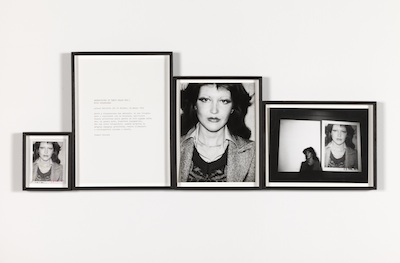
_______________________________________________________________
FrancoVaccari, Esposizione in Tempo Reale N.7, Mito Istantaneo, 1974,
polaroid, vintage photographs, typewritten text, cm.29,7x73,7
_______________________________________________________________
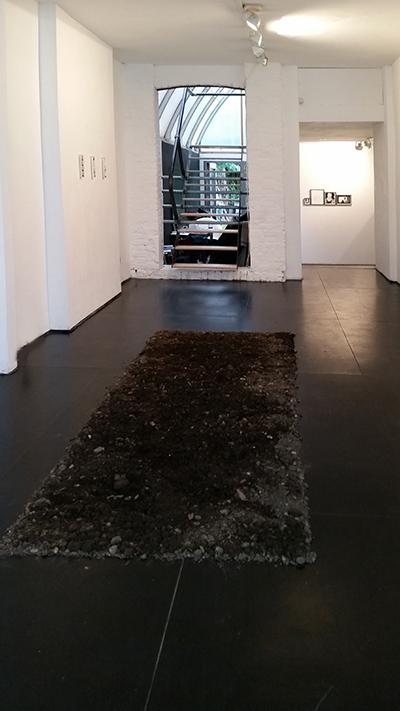
_______________________________________________________________
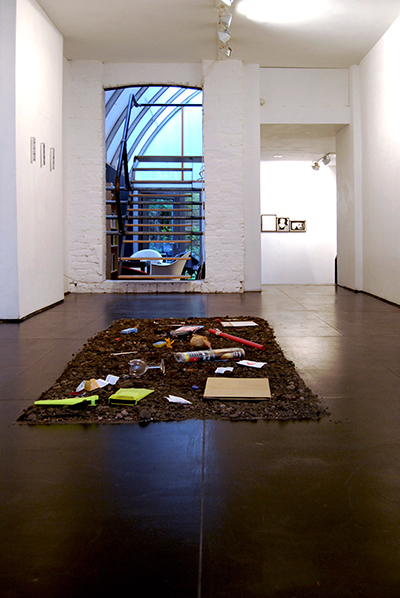
_______________________________________________________________
Ariel Reichman : Franco Vaccari, Installation View, The Agency London
_______________________________________________________________
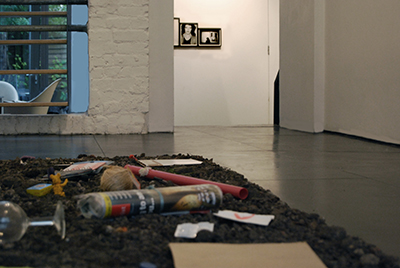
_______________________________________________________________
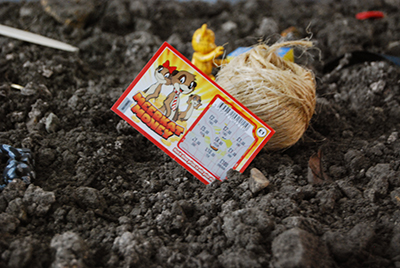
_______________________________________________________________
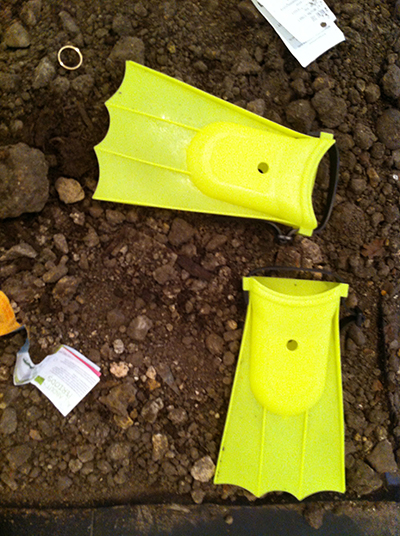
_______________________________________________________________
Ariel Reichman, detail, earth and tokens form the audience, 2015, The Agency
_______________________________________________________________
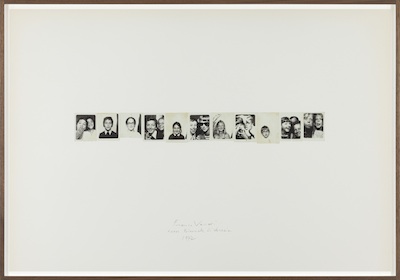
_______________________________________________________________
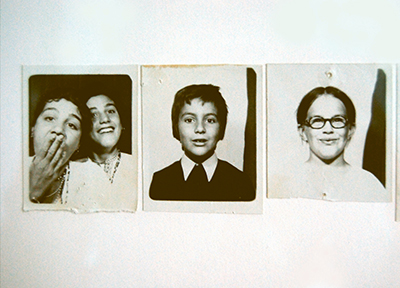
_______________________________________________________________
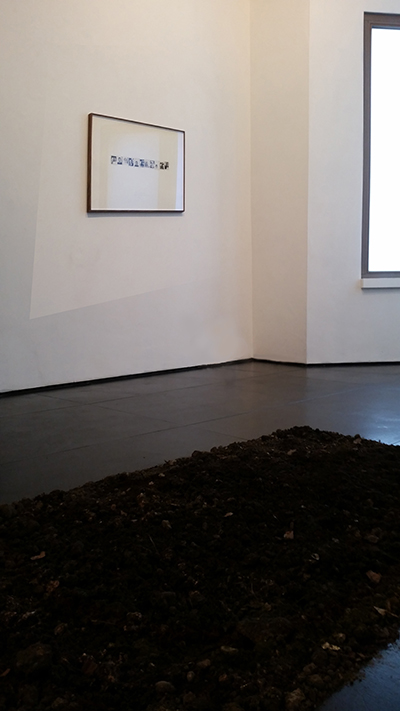
_______________________________________________________________
Franco Vaccari, Esposizione in tempo reale N.4 Lascia su queste pareti una traccia,
full view and detail, The Agency London
_______________________________________________________________
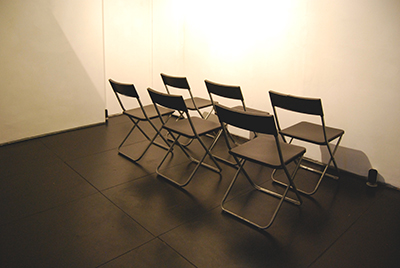
_______________________________________________________________
Ariel Reichman, Please Be Seated, The Show Is About To Begin, 2015 , sound piece,
installation, The Agency London
_______________________________________________________________
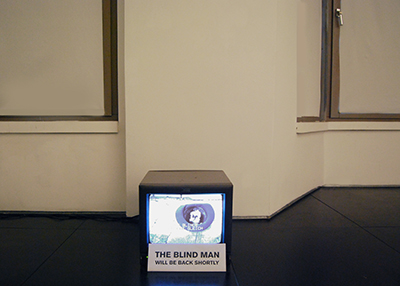
_______________________________________________________________
Franco Vaccari, Il mendicante elettronic, 1973 , video work,
installation, The Agency London
_______________________________________________________________
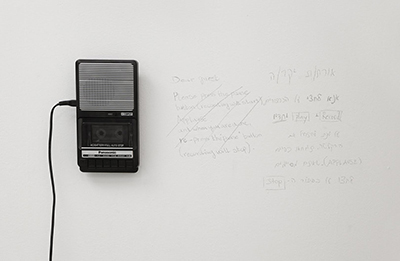
_______________________________________________________________
Ariel Reichman, Applause 2015 , analogue sound piece with audience participation,
installation view, The Agency London
_______________________________________________________________
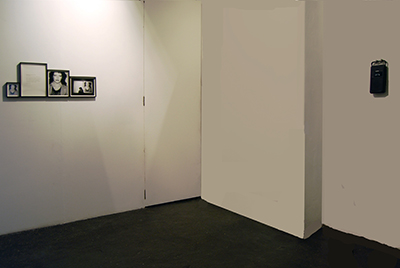
_______________________________________________________________
Ariel Reichman : Franco Vaccari, Installation View, The Agency London
_______________________________________________________________
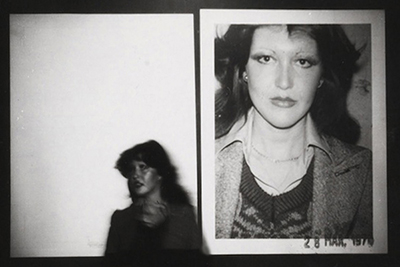
_______________________________________________________________
FrancoVaccari, Esposizione in Tempo Reale N.7, Mito Istantaneo, 1974,
detail, Venice Biennale, 1974
_______________________________________________________________ |
Ariel Reichman : Franco Vaccari
curated by Bea Gassmann de Sousa and Silvia Meloni
When the Agency gallery was founded one of the first discussions was centred on the perceived crisis of conceptual art. Discursive distinctions to some forms of conceptual art led to the use of the term poetic conceptualism. In a return to this line of thought and an exploration of the wider application of the term the practice of Ariel Reichman (1979) will be presented alongside and analysed in relation to selected works by the eminent Italian conceptual artist Franco Vaccari (1936).
The exhibition was conceived in a collaboration between Silvia Meloni and Bea Herhold de Sousa who found that Reichman’s work Dear Felix, I am sorry but we are just too scared to fly (PSM Gallery, Berlin, 2013), itself created in homage to Felix Gonzalez Torres, also mirrored Franco Vaccari’s Esposizione in tempo reale n° 19, Codemondo,(Venice Biennale 1980).Both artists explore the primordial feelings and reactions that are provoked by visitors hearing their own voices, which were recorded live and played back in the gallery.
Franco Vaccari, 1978
” The difference between happenings, performances and ‘exhibitions in real time’ is a difference in structure. While the first two develop straight according to precise and predetermined programmes, exhibitions in real time are characterized by the possibility of retroaction, that is to say to get feed-back.”
Reflections on real-time and retroaction
Conceptual art has often been understood as an artist exerting control over how a space or a situation may be read. Vaccari responded to the controlled rigour of peers such as Joseph Kosuth as well as distancing himself from Allan Kaprow’s happening by emphasising the power of the audience over the contents and reception of the work. He began integrating the direct participation of the audience as an intrinsic part of the work. Il Mendicate Elettronico ('The electronic beggar' or 'The medium is the power', 1973), part of Esposizione in tempo reale n. 6, replaced the action of a beggar asking passersby for money by a TV monitor showing a hand and a hat. The work was accompanied by a sign stating: The blind man will be back shortly. The work and was first exhibited in a square in Graz, overturning the usual social hierarchy by focussing the attention on passer--by rather than the beggar.
Vaccari ‘s series of Espozioni in Tempo Reale (Exhibtions in Real-Time) are immersive works created as temporary installations, which required the interaction of the audience to complete. Leave on the walls a photographic trace of your fleeting visit reads the simple instruction of Esposizione in Tempo Reale 4. In the age of the Polaroid, the first “Selfies” created in a photo booth were left behind by the spectator turning the installation into a space of public interest and the audience complicit with the artist. The device, which was originally positioned in public spaces, was installed at the prestigious Venice Biennale, subverting the criteria of exhibition process. The 'technological subconscious' of the camera - a term coined by Vaccari- acted in lieu of the artist, and it enabled the visitor to act with freedom of expression and incorporate their ideas into the overall artwork. The questioning of the auteur had begun.
Today we find ourselves in a different era, one, where the power of the audience has resulted in a destabilisation of the artist’s conceptual control over the media, see the current spat between Instagram users and Richard Prince’s appropriations. The audience is no longer in awe. Vaccari appears like a visionary today with Esposizione in Tempo Reale n. 7: Mito Instantaneo (Galleria 291, Milan, 1974), where photographs were taken by the artist of members of his audience, with the resulting photograph projected large scale in an adjacent room, exhibited and admired by the models themselves all during the opening of the show itself. Everything was resolved, from the creation of the exhibition to the definitive experience of the work.
In the era of the avatar Ariel Reichman grapples with the effect of media oversaturation on the direct experience of art. Reichman devised three works, which respond to Franco Vaccari’s work within the given parameters of his own practice. The gallery is no longer the space for the event, the representation of the exhibition online or the facebook ‘like’ are replacing the actual experience of the work with the acknowledgement of ctd.
the opportunity for experience. Reichman counters this by soliciting the audience’s particpation. Continuing the form of leaving a trace requires the viewer to leave a token as a trace of their visit. The tokens, displayed on a territory marked by the artist, create the work and its significance. In a nod to the Jewish tradition of leaving a stone on the grave you have visited, Reichman renders the gesture compulsory and the visit to the site of the exhibition inevitable. The concept connects the piece to other works by Reichman which refer more directly to the frequency of lives lost within an Israeli context and the immediacy of the ritual surrounding burial and memory in the exhibition 1200 kg of Dirt at the Petach Tikva Museum last year. A further work challenges the visitor’s participation to come into being, while another involves the viewer in a theatrical experience, which fades the moment it is enacted.
Reichman’s work asks for the audience to come forward once more and in doing so experience the works of Vaccari which almost fifty years ago foresaw the fundamental change the media would bring to our engagement with art.
Ariel Reichman (1979), Johannesburg, lives and works in Berlin. He studied at the Universität der Künste Berlin (UdK) and in the MFA program at Bezalel Academy of Art and Design. Recent solo exhibitions include Sommer Contemporary Projects, Tel Aviv (2015), Waterside Contemporary, London (2014), the Petah Tikva Museum of Art (2013), PSM Gallery, Berlin ( 2013, 2010 ), Frieze New York (2014,2015) and participated in group exhibitions such as Manifesta 8 in Spain (2010), Haifa Museum of Art (2013), the Tel Aviv Museum of Art (2015) and Goodman Gallery (2015) Cape Town. Reichman will present a solo exhibition in Mendes Wood DM Gallery, Sao Paulo in February 2016.
Franco Vaccari (1936), Modena, lives and works in Modena. He represented Italy at the 36th, 39th, and 45th Venice Biennales, 1972, 1980 and 1993 respectively and has exhibited continuously since 1966. His work was recently exhibited in a two-person exhibition with Sanja Ivekovic´ at P420 gallery, Bologna (2015), (Mis) Understanding Photography at the Museum Folkwang, Essen ( 2014), the 8th Gwangju Biennale( 2010. His recent solo shows include the Mostyn Museum, Llandudno ( 2014) and BASE, Florence ( 2014). His work is included in the forthcoming exhibition Take Me I’m Yours at Monnaie, Paris, co-curated by Hans-Ulrich Obrist and Christian Boltanski.
|